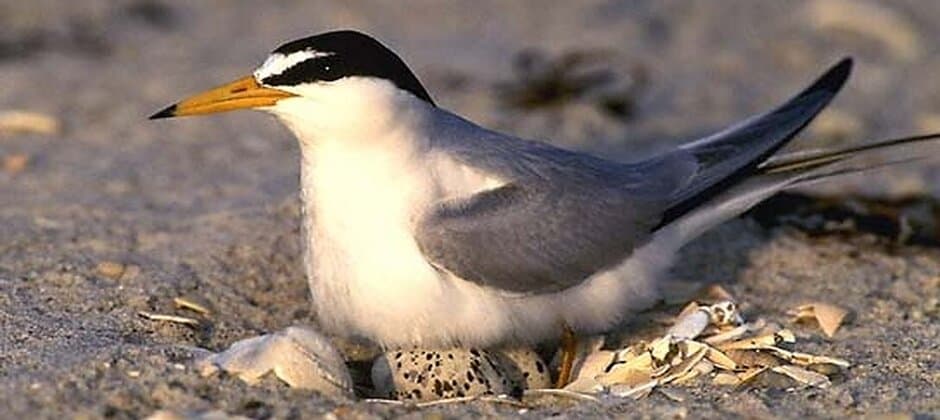Share this article
Interior least terns to be removed from ESA list
The U.S. Fish and Wildlife Service has determined that the interior least tern (Sterna antillarum athalassos) has recovered and therefore will be removed from the list of threatened and endangered species under the Endangered Species Act.
The interior population of the small fish-eating bird was listed as a distinct population segment in 1985. The population ranges in the United States across the Great Plains and Lower Mississippi Valley and winters in the Caribbean and South American.
At the time of listing, fewer than 2,000 birds survived in about a dozen colonial nesting sites. The population had diminished after unregulated overharvesting by the millinery trade in the 19th and early 20th centuries followed by degradation and destruction of the bird’s habitat along rivers. Since then, efforts from the USFWS and its partners have led to a nearly tenfold increase in population. Today, there are more than 18,000 individuals at over 480 nesting sites in 18 states.
The Service finalized a recovery plan for the population in 1990, with criteria designed to remove threats to the bird’s habitats, enhance existing habitats, and achieve a range-wide population of at least 7,000 individuals. The population size goal was first met in 1994.
“Dozens of states, federal agencies, tribes, businesses and conservation groups have worked tirelessly over the course of three decades to successfully recover these birds,” said USFWS Director Aurelia Skipwith in a press release. The USFWS has worked closely with the Army Corps of Engineers, which has jurisdiction over much of the bird’s habitat, as well as private landowners and others to reduce and mitigate threats to their habitats.
The USFWS will develop and implement a post-delisting monitoring plan for the tern and track its status for at least five years after delisting to ensure that the population remains stable.
The tern will continue to be protected under the Migratory Bird Treaty Act. However, the final rule notes that recent changes to the MBTA to exclude incidental take from the law’s scope could affect interior least terns. “There is the potential that … incidental take may increase on some nesting areas,” the delisting rule states.
First proposed in Oct. 2019, the delisting will take effect on Feb. 12, 2021.
Read TWS’ Standing Position on Threatened and Endangered Species in the U.S. and Position Statement on the U.S. Endangered Species Act
Header Image: Interior least terns will be removed from the endangered species list. Credit: USFWS








